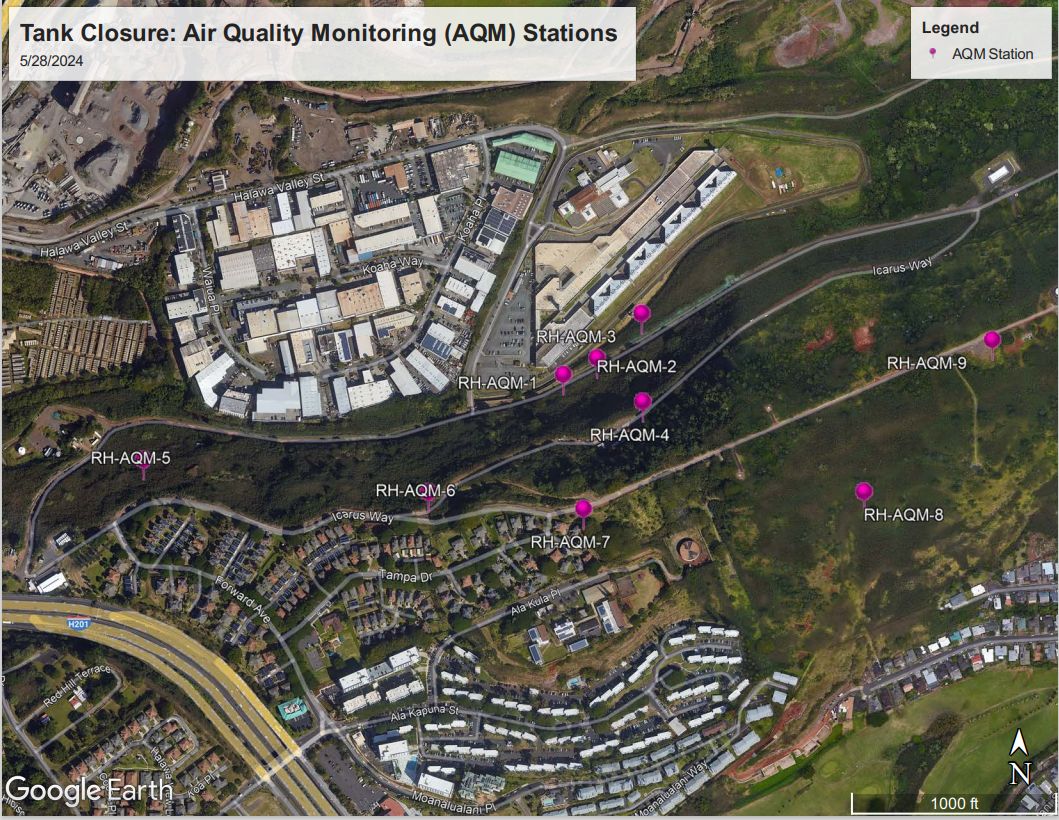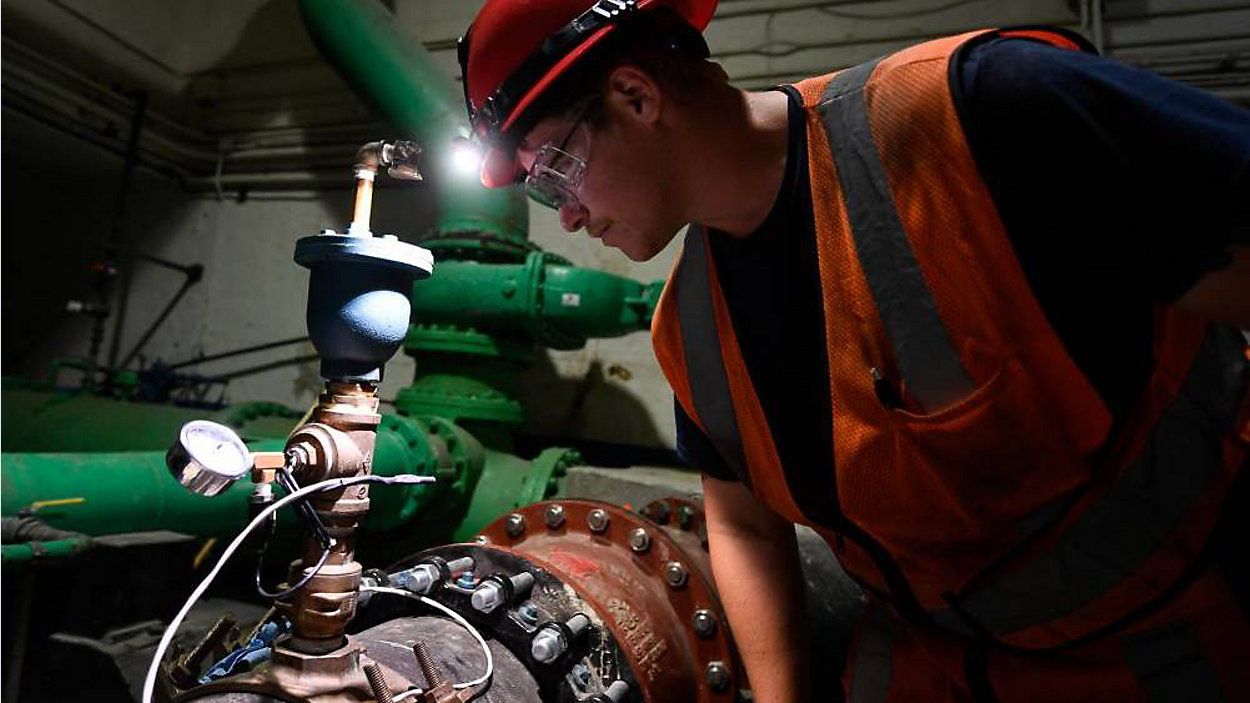PEARL HARBOR, Hawaii — The Navy Closure Task Force-Red Hill will start venting tanks at the Red Hill Bulk Fuel Storage Facility on Friday, having received conditional approval from the Hawaii Department of Health.
In March, the Navy took over responsibility of the closure process for Red Hill, after the Joint Task Force-Red Hill drained 104 millions of gallons of fuel from the tanks.
The final closure process includes four phases: removing 28,000 gallons of sludge from the tanks, cleaning 16 storage tanks and four surge tanks, removing more than 10 miles of pipeline that runs between the Red Hill facility and Joint Base Pearl Harbor-Hickam, and completing environmental remediation around the facility.
In order to remove the sludge from the Red Hill tanks, Navy officials said the tanks must first be vented.
NCTF-RH will start tank cleaning operations Friday by venting Tank 8 at the facility, according to a news release. Along with the tank ventilation, the Navy will conduct air quality monitoring.
“NCTF-RH has worked closely with DOH to ensure ventilation of the tanks is done in a manner that will not pose a risk to human health,” Rear Adm. Marc Williams, NCTF-RH deputy commander, said in a statement. “Our team is committed to safely decommissioning the facility, and tank ventilation operations gets us another step closer to this goal.”

The task force installed nine air quality monitoring stations at the perimeter of the Red Hill facility, including at the Halawa Correctional Facility, to measure potential volatile organic compound levels and collect atmospheric data, like wind direction and humidity.
During venting operations, the air quality monitoring data will be updated hourly on the NCTF-RH mobile app and daily on the website.
If air quality levels reach 20 parts per million by volume at the stack, where the ventilation system's exit point is located, NCTF-RH will cease operations until levels have decreased.
NCTF-RH said in the event that air quality levels reach 38 parts per million by volume, they will alert regulators, Hawaii Emergency Management Agency and Honolulu Department of Emergency Management; they will alert the public via the app, website and a news release to the media. According to the Environmental Protection Agency, this is considered Level 1 exposure. Human exposure at these levels may include discomfort, irritation or certain asymptomatic non-sensory effects. The EPA considers air quality levels at 144 parts per million by volume as Level 2 exposure. These conditions may include long-lasting adverse health effects or an impaired ability to escape.
DOH’s conditional approval of the Navy’s air quality monitoring plan requires NCTF-RH to notify the public at least 12 hours before they start venting a tank, limit the number of tanks that may be vented at any time to two, and limit the number of tanks that may be vented in a calendar year to six.
DOH also requires the Navy to stop venting and notify the state agency if there is an exceedance of volatile organic compounds, according to limits mandated by DOH. If an exceedance occurs, NCTF-RH will need to seek DOH approval before restarting the ventilation process.
The Navy said anyone with questions or concerns should call the Navy Call Center at 808-210-6968.
Michelle Broder Van Dyke covers the Hawaiian Islands for Spectrum News Hawaii. Email her at michelle.brodervandyke@charter.com.
Editor's note: This story has been updated with additional information provided by the Navy about the air quality monitoring. (May 31, 2024)



